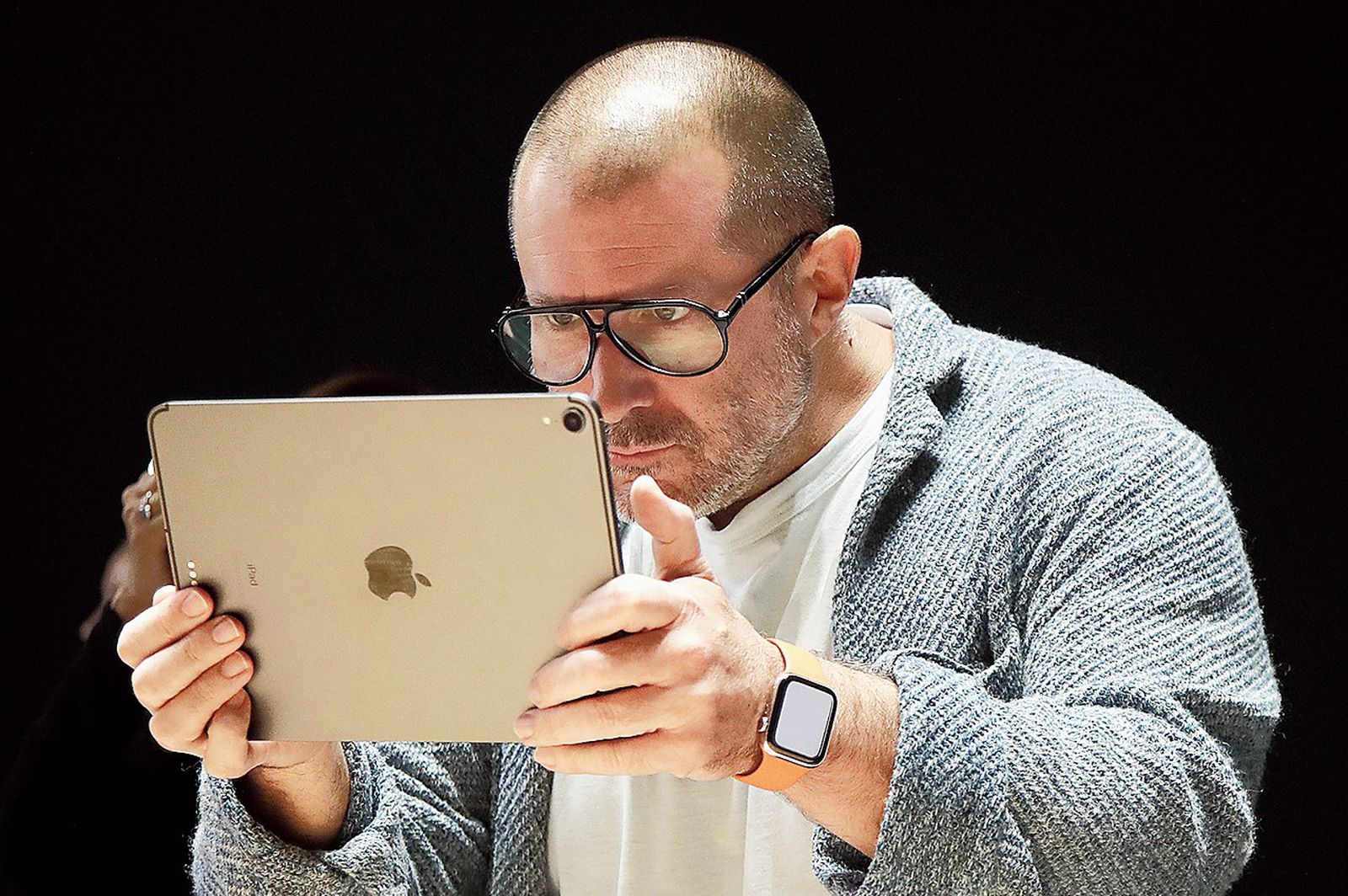The Future Of AI Hardware: OpenAI And Jony Ive's Collaboration

Table of Contents
Jony Ive's Design Philosophy and its Application to AI Hardware
Jony Ive, renowned for his minimalist design philosophy and intuitive user experiences at Apple, brings a unique perspective to the world of AI hardware. His design principles, characterized by simplicity, elegance, and seamless user interaction, could profoundly impact the look and feel of future AI devices.
- Intuitive Interfaces: Ive's focus on user experience could translate to AI hardware with incredibly user-friendly interfaces. Imagine AI assistants that are not only powerful but also a joy to interact with, thanks to intuitive design choices.
- Seamless Integration: His emphasis on seamlessly integrating technology into daily life could lead to AI devices that are less intimidating and more accessible to a wider audience. This could mean smaller, more integrated devices that blend seamlessly into our homes and workplaces.
- Sustainable Aesthetics: Ive's commitment to sustainability could influence the development of AI hardware that is both aesthetically pleasing and environmentally conscious, using recycled materials and energy-efficient manufacturing processes.
- Groundbreaking Form Factors: His history of creating iconic product designs, like the iPhone and Apple Watch, could inspire the creation of groundbreaking form factors for AI devices – moving beyond the current boxy designs to something truly innovative.
OpenAI's Technological Advancements and Hardware Requirements
OpenAI's advancements in artificial intelligence, particularly its large language models (LLMs) like GPT-4 and image generation models like DALL-E 2, demand increasingly powerful and efficient hardware. The computational demands of training and running these complex neural networks are immense, pushing the boundaries of current chip technology.
- Specialized AI Chips: A collaboration could lead to the development of custom-designed AI chips optimized for OpenAI's specific algorithms. This could significantly improve performance and energy efficiency.
- Energy Efficiency: Training and running large AI models consumes vast amounts of energy. A key focus would be on developing energy-efficient hardware solutions to reduce the environmental impact of AI.
- Advanced Cooling Solutions: High-performance AI hardware generates significant heat. The collaboration could explore innovative cooling technologies to ensure stable and efficient operation.
- AI Computing Infrastructure: The partnership might also explore advancements in AI computing infrastructure, moving beyond individual devices to powerful cloud-based systems capable of handling even more complex AI models.
Potential Synergies and Innovative Applications
The synergy between OpenAI's technological prowess and Ive's design expertise has the potential to unlock revolutionary applications across various industries.
- Consumer Electronics: We could see new generations of smartphones, smart speakers, and other consumer electronics powered by far more advanced AI capabilities, all packaged in beautifully designed and intuitive devices.
- Industrial Applications: The collaboration could revolutionize industrial applications of AI, ranging from robotics and automation to advanced medical imaging and diagnostics.
- New Paradigms in HCI: This partnership could lead to entirely new paradigms in human-computer interaction. Imagine interacting with AI through natural language, gestures, or even thought – all made possible by sophisticated hardware and intuitive design.
- Novel Form Factors: We can expect to see AI hardware in forms we haven't even imagined yet, pushing the boundaries of traditional device designs and unlocking new possibilities.
Ethical Considerations in AI Hardware Design
Ethical considerations are paramount in the development of AI hardware. The collaboration between OpenAI and Ive should prioritize responsible innovation and address crucial ethical concerns.
- Data Privacy: Robust data privacy mechanisms must be integrated into the hardware design to protect user data from unauthorized access or misuse.
- Algorithmic Bias: Mitigating algorithmic bias is crucial, ensuring that AI systems are fair and equitable in their operation.
- Sustainable Manufacturing: The environmental impact of AI hardware manufacturing must be minimized through sustainable practices and the use of environmentally friendly materials.
- AI Safety: Safety protocols and fail-safes must be incorporated to prevent unintended consequences and ensure responsible use of AI technology.
Conclusion
The potential collaboration between OpenAI and Jony Ive represents a significant leap forward in the future of AI hardware. By combining cutting-edge AI technology with a visionary design approach, this hypothetical partnership could reshape our interaction with AI, making it more accessible, intuitive, and ethically responsible. The development of innovative AI hardware driven by this collaboration holds the key to unlocking the transformative potential of artificial intelligence. Learn more about the exciting possibilities of AI hardware and its future developments by staying updated on industry news and exploring the work of both OpenAI and Jony Ive.

Featured Posts
-
 Applying For Italian Citizenship The Impact Of The New Great Grandparent Law
May 23, 2025
Applying For Italian Citizenship The Impact Of The New Great Grandparent Law
May 23, 2025 -
 Why Stretched Stock Market Valuations Shouldnt Deter Investors A Bof A Report
May 23, 2025
Why Stretched Stock Market Valuations Shouldnt Deter Investors A Bof A Report
May 23, 2025 -
 High Cost Of Living Impacts Canadian Auto Theft Prevention Measures
May 23, 2025
High Cost Of Living Impacts Canadian Auto Theft Prevention Measures
May 23, 2025 -
 Russell Dominates Final F1 Day
May 23, 2025
Russell Dominates Final F1 Day
May 23, 2025 -
 Sheinelle Jones Absence From Today Show Cast Discusses Every Day Impact
May 23, 2025
Sheinelle Jones Absence From Today Show Cast Discusses Every Day Impact
May 23, 2025
Latest Posts
-
 Smart Appliance Buys Memorial Day 2025 Sales Forbes Vetted
May 23, 2025
Smart Appliance Buys Memorial Day 2025 Sales Forbes Vetted
May 23, 2025 -
 Ohio Man Found Guilty In Child Sex Abuse Case
May 23, 2025
Ohio Man Found Guilty In Child Sex Abuse Case
May 23, 2025 -
 What Are The Florida Store Hours For Memorial Day 2025
May 23, 2025
What Are The Florida Store Hours For Memorial Day 2025
May 23, 2025 -
 Tulsa King Season 3 Sylvester Stallones New Set Image
May 23, 2025
Tulsa King Season 3 Sylvester Stallones New Set Image
May 23, 2025 -
 Tulsa King Season 2 Blu Ray Exclusive First Look At Sylvester Stallone
May 23, 2025
Tulsa King Season 2 Blu Ray Exclusive First Look At Sylvester Stallone
May 23, 2025
